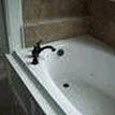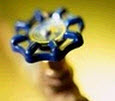Photos don’t directly affect your ranking in Google Places, but they’re mighty important to your local visibility.
All customers who find you in Google Places will see at least one of your photos. Your photos sit near the top of your Places page. Your main photo sometimes shows up on the first page of the local results (assuming your business is on the 1st page). They’re always visible to customers who are combing through local businesses in the “Maps” tab.
Photos are front-and-center in Google Places. Bad photos can repel customers, but good ones can win you some phone calls.
But how do you tell good photos from lousy ones, other than by trusting your gut? Don’t look to the Google Places photo guidelines for help with this: they just tell you the photo can’t be larger than such-and-such dimensions, can’t contain violence or nudity, etc. Not exactly news to you.
Here are some photo types that are likely to attract customers—and some photos that are better at repelling them. (By the way, all the photos below are ones I actually found on real Places pages.)
Great photos to add to your Places listing and website (in no particular order):
 A group photo of you and your staff—either outside or inside your building. If you don’t have a staff and instead run a “mom and pop” type of business, maybe include a photo of you and your spouse (or whomever) at your building.
A group photo of you and your staff—either outside or inside your building. If you don’t have a staff and instead run a “mom and pop” type of business, maybe include a photo of you and your spouse (or whomever) at your building.
- Human faces are great. I suggest you have at least some pictures of your face and those of the people who help you keep the business chugging along. Your customers would rather buy from other people, not from some faceless fat-cat corporation. Just make sure there’s context, like having the picture taken in your office or on a job site, or else you’ll just look like a really mature-looking high schooler in a yearbook photo.
 Your main service or product in all its glory. Obviously, it kind of depends on what your service or product is, but that’s why our brains are blessed with the Judgment Lobe.
Your main service or product in all its glory. Obviously, it kind of depends on what your service or product is, but that’s why our brains are blessed with the Judgment Lobe.
- Front sign. Make sure you capture a little bit of what’s around the sign (AKA some background), so that the sign doesn’t look Photoshopped or as though it doesn’t actually exist in the real world.
 Your storefront or office. Try to take the picture on a sunny day (might have to wait a few months if you live in Seattle or here in New England). If possible, try to take it from far enough away that people might say “Hey, I know where that is!”
Your storefront or office. Try to take the picture on a sunny day (might have to wait a few months if you live in Seattle or here in New England). If possible, try to take it from far enough away that people might say “Hey, I know where that is!”
- A photo of you “in action.” Same caveat as above: it needs to appear candid, so that you don’t look like you’re on a photo op. It also has to be obvious what you’re doing. Roofer up on a roof = good. Person sitting at a desk with a bunch of papers = bad.
- Awards your business has won. Blue ribbons, plaques, certificates, or a picture from a website that gave you some award worth mentioning (like “Best of CitySearch 2011). Anything that bolsters credibility. It doesn’t matter if you haven’t been featured in Forbes yet: just use whatever you’ve got.
- Pretty much any of the above pictures with captions added. Captions attract people’s attention. “How do I add captions to photos in Google Places,” you ask? Well, you can’t. So you have to add the wording to the picture itself (which you then upload as you would any other picture). I like to do this in SnagIt Editor, but Photoshop or most other editing tools work just fine.
- A picture of your Better Business Bureau rating—if you have one, and assuming it’s good (A or A+). Thing is, you need to make it clear that your rating is actually real. That’s why this is an ideal picture to add a caption to, in order to tell visitors exactly how they can find your business on BBB and see your rating first-hand.
- Coupons or special offers that just can’t fit in the “Offers” area of your Google Places page.
 Credit cards you accept. Customers have to know how they can pay you—like whether they have to bring their checkbook or stop by the ATM. Especially now that you can’t specify “payment types accepted” on your Places listing, it’s smart to let customers know about accepted payment types sooner rather than later.
Credit cards you accept. Customers have to know how they can pay you—like whether they have to bring their checkbook or stop by the ATM. Especially now that you can’t specify “payment types accepted” on your Places listing, it’s smart to let customers know about accepted payment types sooner rather than later.
- Late addition: a picture of your logo (especially if it’s a nice one). This is a relatively common practice, but a good one. Thanks to James for suggesting this one.
Lousy photos—to avoid using on your Places page:
- Blurry photos. Everything but a cotton ball looks worse when it’s blurry.
- Red eyes. Just take 5 minutes to remove them (with Photoshop or whatever program you prefer).
- Stock photos. These are often cheesy—like a bunch of “employees” high-fiving each other above their cubicles, smiling for no apparent reason. It’s also a lousy feeling when you stumble across another business that’s using the exact same stock photo you paid good money for.
 Tiny photos. Obviously, only thumbnails are visible to customers, but if people click on a photo, that means they want to see a larger version of it.
Tiny photos. Obviously, only thumbnails are visible to customers, but if people click on a photo, that means they want to see a larger version of it.
- Pictures of you without your staff. Unless you’re truly a one-person operation, this can appear egotistical. And don’t say “Well, we’re always getting new receptionists.” Your customers won’t be able to tell if Ruth at the front desk doesn’t work for you any more. But if you’re OCD about this kind of thing, just another picture when your staff changes.
- Really old photos. If the people in your photo are sporting mullets and parachute pants, it may be time to take a new one.
 Abstract photos. If you’re a landscaper, a picture of a single blade of green grass just doesn’t add anything to your Places page.
Abstract photos. If you’re a landscaper, a picture of a single blade of green grass just doesn’t add anything to your Places page.
- Not too behind-the-scenes. For instance, if you’re a dentist, don’t use a picture of you smiling in your dentist’s chair while you stick a drill in a patient’s face. Or don’t take a picture of the waiting room or your office where a bunch of dental tools are in the sink waiting to get cleaned (I’ve actually seen this done, unfortunately).
You can add 10 photos to your Google Places page, and as many as you want to your site. That sounds like a lot of room for all kinds of photos. But if you’re serious about attracting as many local customers as possible, you’ll always need to pick every photo wisely.
—
Can you think of any keepers/stinkers that you’d add to either list? Leave a comment!
(By the way, if you haven’t seen it already, there are plenty of examples of bad photos in the blog post I did a while back, the 1st Annual Google Places Freak Show. You’ve seen the good and bad—and this is where you can see the ugly.)
How about logos isn’t that a good idea? Give someone a memorable image especially if you are a storefront type business. Also good to verify who you called for service when someone shows up in a truck with the logo. Also the same logo on clothing.
Hey James. Yeah, that is a good idea–especially if it’s a nice logo. I think I’ll add that to the list. Good call–thanks!
Two of the five photos I had on Google Places were “people” (vs. pictures of the building, etc…), and both of these have been removed. Is there some kind of rule that prohibits showing photos of people?
Great question. Off the top of my head, my best guess would be that Google may have thought the pics were stock photos and therefore not of your real customers. Or maybe they thought the pictures were “candids,” taken without having the people in them sign a model release. But I’m sure you did everything 100% correctly–those were just a couple guesses I’m throwing out there–so I can only say for sure if I just see the pictures.
Maybe the thing to do is to try to upload them again, and if they don’t stick this time, you can feel free to email them to me and I’ll take a quick look and throw in my two cents.